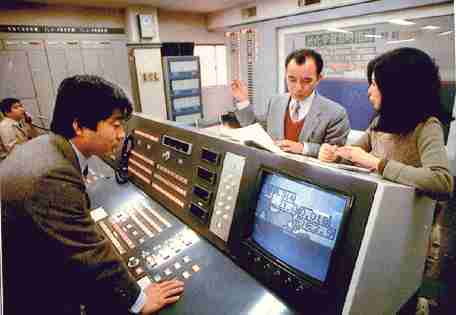previous page
ARE WE DEEPER in jeopardy with every breath we take, every automotive
move we make?
Nationally, says the EPA, air quality has improved since 1975 in the
commonly known and regulated criteria pollutants--particles, sulfur dioxide,
carbon monoxide, nitrogen dioxide, ozone, and lead. And yet, in the introduction
to its National Air Quality and Emissions Trend Report, the agency points
out that nearly 80 million people live in counties where ozone levels exceed
air-quality standards, 61 million breathe too much carbon monoxide, and
32.6 million share air space with too many particles.
Progress in criteria pollutants can be measured in numbers. In newer,
more mysterious toxics it is best measured in attitudes.
"Fifteen years ago chemists were dealing with London's sulfurous smog
in one camp, photochemical smog in another, and the toxic chemicals people
didn't talk with the other two camps," said Dr. James N. Pitts, Jr. His
recent book Atmospheric Chemistry, co- authored with Dr. Barbara Finlayson-Pitts,
is a major reference. "It is clear that we must look at trace species such
as nitrate and hydroxyl radicals present in concentrations thousands of
times lower than SO2 and NOx. They are now known to be linked with acid
rain, photochemical smog, and the reactions of toxic chemicals in air."
"It's like the medical profession," meteorologist Elmer Robinson told me
on Mauna Loa. "It solved infections like smallpox and scarlet fever and
now it tackles long-term effects like cancer. In the case of pollution,
we have dealt with acute local problems, and now we are addressing the
longer-term atmospheric problems."
Throughout history humans have lived with perils over which there seemed
little control -- stronger creatures, hostile elements, mysterious diseases.
One by one such threats have been tamed and replaced by one of our own
making.
Air pollution is modern man's wolf at the door, said Dr. Irving J.
Selikoff, called by some the father of pollution health effects. In a Mount
Sinai Hospital office in New York City, amid stacks of research data, he
told me: "It is a public problem as well as a science problem. Regulation
is up to the government, but government bases decisions on its reading
of what people want."
Since costs are high and truth is elusive, regulation may be slow in
coming, says Dr. Selikoff. With patriarchal calm he folded his hands before
saying carefully: "If you look at the studies and the experiments with
guinea pigs and mice, it looks like we should all get off the face of the
earth. But we don't really know what many of the substances in the air
do to people. It may take 50 years to know that. Can we wait that long?"
As Roger Revelle, University of California professor of science and
public policy, once stated, "Mankind is in the process of conducting a
major, unintentional experiment, that of feeding back into the atmosphere
in a short space of geological time the fossil fuels that have slowly accumulated
over the past 500 million years. . . ."
Now that the chemical era has joined the age of combustion, that experiment
has expanded. Almost breathlessly we await the outcome. We are our own
guinea pigs. []

 Certified
victims of air pollution, Machi Kuramochi (left, seated), Tokuji Maehara
(standing at left) and Kiyoharu Yamamoto of Kuwasaki, Japan, show gov-
ernment papers authorizing payments for asthma treatments. Sashes bear
the name of their pollution-victims advocacy group.
Certified
victims of air pollution, Machi Kuramochi (left, seated), Tokuji Maehara
(standing at left) and Kiyoharu Yamamoto of Kuwasaki, Japan, show gov-
ernment papers authorizing payments for asthma treatments. Sashes bear
the name of their pollution-victims advocacy group.
Once one of Japan's most polluted cities, Kuwasaki has reduced
sulfur dioxide emissions by 96 percent since 1970. Helping to keep up the
good work, controllers (above) check air-quality data from remote sensors.
back to the main index

 Certified
victims of air pollution, Machi Kuramochi (left, seated), Tokuji Maehara
(standing at left) and Kiyoharu Yamamoto of Kuwasaki, Japan, show gov-
ernment papers authorizing payments for asthma treatments. Sashes bear
the name of their pollution-victims advocacy group.
Certified
victims of air pollution, Machi Kuramochi (left, seated), Tokuji Maehara
(standing at left) and Kiyoharu Yamamoto of Kuwasaki, Japan, show gov-
ernment papers authorizing payments for asthma treatments. Sashes bear
the name of their pollution-victims advocacy group.